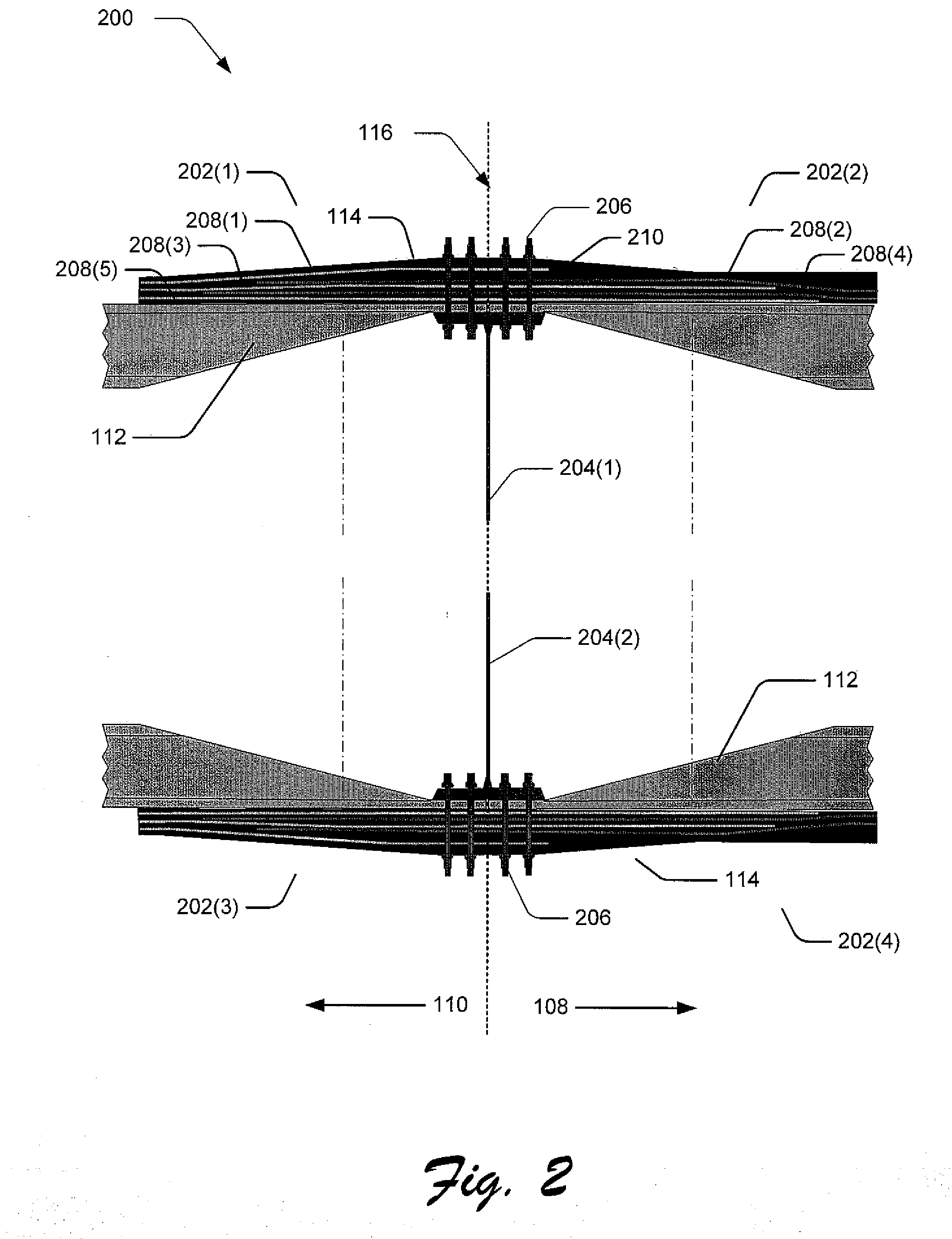Composite wing-body joint
a composite and wing body technology, applied in the direction of fuselages, aircraft floors, transportation and packaging, etc., can solve the problems of increased operational cost, increased aircraft weight, and increased weight of mechanical joints, and achieve the effect of light weight structur
- Summary
- Abstract
- Description
- Claims
- Application Information
AI Technical Summary
Benefits of technology
Problems solved by technology
Method used
Image
Examples
Embodiment Construction
[0011]The present invention relates to aerodynamic structures such as composite wings and tails and wing-to-body joints. Many specific details of certain embodiments of the invention are set forth in the following description and in FIGS. 1-5 to provide a thorough understanding of such embodiments. One skilled in the art, however, will understand that the present invention may have additional embodiments, or that the present invention may be practiced without several of the details according to the following description. For instance, while certain embodiments reference composite wing structures for an aircraft, it may be appreciated by those of skill in the art that the techniques described may be applied in a variety of aerodynamic structures.
[0012]FIG. 1 illustrates an aircraft 100 in accordance with an embodiment of the present invention. In this embodiment, the aircraft 100 includes a fuselage 102 which is joined to a composite wing structure 104. The composite wing structure 1...
PUM
 Login to View More
Login to View More Abstract
Description
Claims
Application Information
 Login to View More
Login to View More - R&D
- Intellectual Property
- Life Sciences
- Materials
- Tech Scout
- Unparalleled Data Quality
- Higher Quality Content
- 60% Fewer Hallucinations
Browse by: Latest US Patents, China's latest patents, Technical Efficacy Thesaurus, Application Domain, Technology Topic, Popular Technical Reports.
© 2025 PatSnap. All rights reserved.Legal|Privacy policy|Modern Slavery Act Transparency Statement|Sitemap|About US| Contact US: help@patsnap.com



